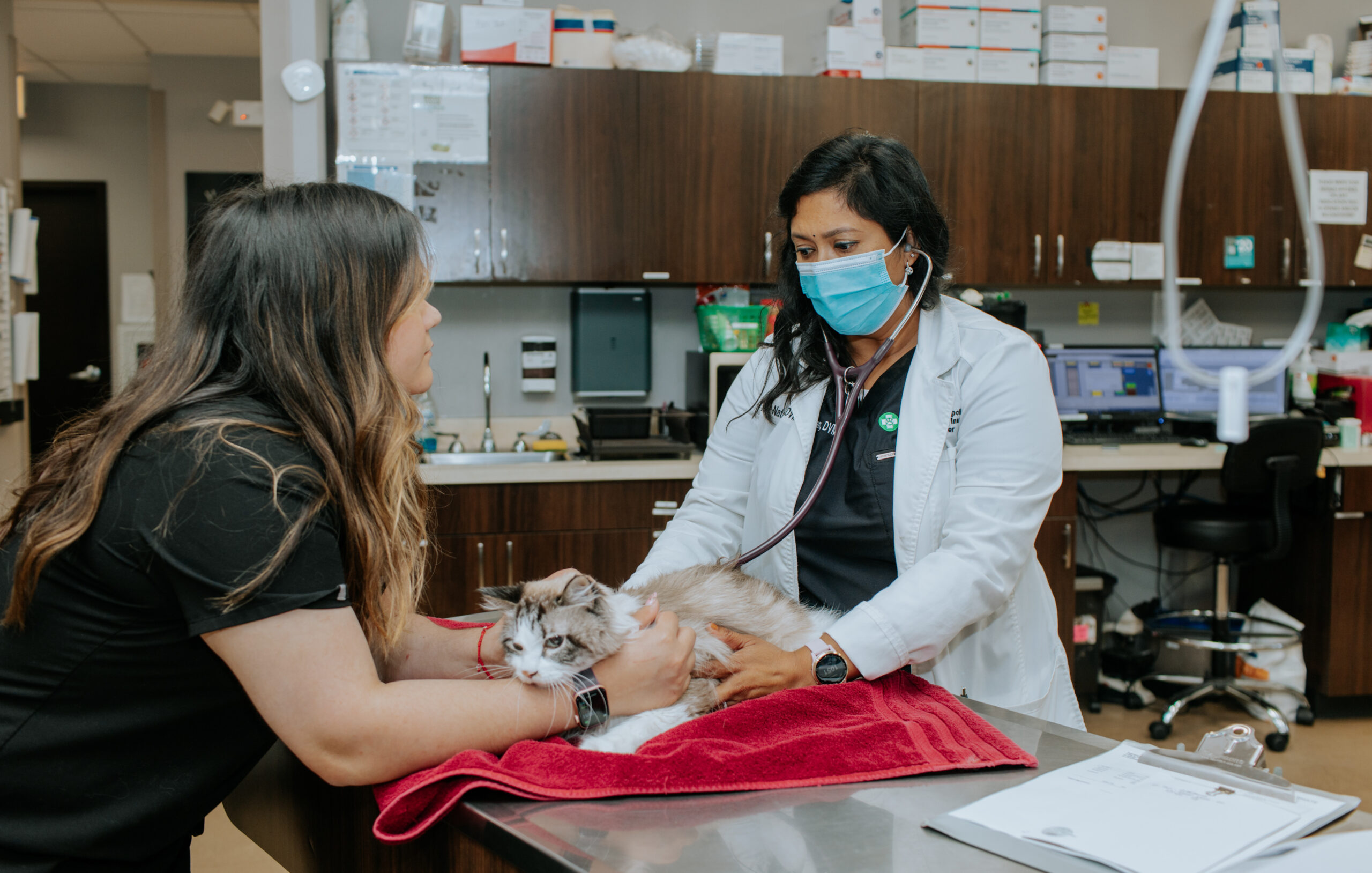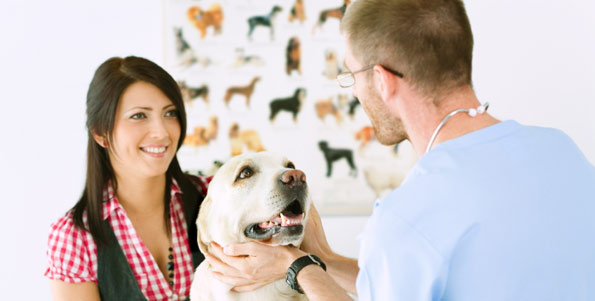Choosing the Best Veterinary Clinic for canine tplo surgery in Your Area
Choosing the Best Veterinary Clinic for canine tplo surgery in Your Area
Blog Article
All Regarding Veterinarian Surgery: Recognizing the Relevance of Specialist Care for Your Pet dogs
Veterinary surgical procedure is a vital component of pet medical care. It encompasses different procedures, from regular optional surgical treatments to immediate treatments. Comprehending the complexities of these surgeries can aid pet dog proprietors make educated choices. The prep work, implementation, and healing stages are vital for guaranteeing the well-being of animals. With correct understanding, owners can navigate the intricacies of vet treatment. What elements should be taken into consideration prior to a family pet undergoes surgical procedure?
Sorts Of Veterinarian Surgeries
When a pet requires surgical treatment, understanding the different kinds of vet surgical treatments can assist animal owners make educated choices. Vet surgical procedures can be generally categorized right into 3 major kinds: elective, immediate, and emergency surgical treatments. Optional surgeries, such as spaying or neutering, are planned treatments that are not promptly dangerous. Urgent surgeries, like those for foreign body elimination, need to be carried out quickly however are not serious in the moment. Emergency surgical treatments, such as those resolving severe injury or internal blood loss, are important and call for instant attention.Additionally, surgical treatments can differ in complexity, ranging from minimally intrusive laparoscopic treatments to a lot more substantial open surgical treatments. Each kind of surgical procedure lugs its own dangers and recovery procedures. Recognizing these groups allows pet dog owners to involve in purposeful conversations with vets, causing better results for their precious family pets.
Preparing for Your Animal's Surgical treatment
Planning for a pet dog's surgical procedure includes a thorough checklist to ensure all basics are covered. Effective communication with the veterinarian is essential for understanding the procedure and any type of essential pre-operative actions - tplo surgery for dogs. Additionally, having clear post-operative treatment directions will certainly assist proprietors provide the very best support for their recouping family pets
Pre-Surgery Checklist Basics
Assuring a smooth medical experience for an animal calls for careful prep work and interest to information. A pre-surgery checklist is necessary for animal owners to adhere to. Confirming the scheduled surgery day and time is important. Proprietors must additionally validate that their pet dog has not eaten according to the veterinarian's directions, commonly for 8-12 hours before surgical procedure. Gathering needed medical records, consisting of vaccination background, is very important for the veterinarian's evaluation. It is likewise a good idea to prepare a comfortable area in your home for the pet's healing after surgical procedure. Finally, owners need to have a plan for transportation to and from the veterinary center, seeing to it that the pet dog is secure and comfy throughout the journey. Following these steps can greatly enhance the surgical experience.
Communicating With Your Veterinarian

Reliable interaction with the veterinarian is important for a successful medical experience for family pets. Proprietors should be prepared to review their family pet's medical history, consisting of any pre-existing conditions, medicines, and allergic reactions. This details assists the veterinarian examine dangers and tailor the medical strategy as necessary. In addition, family pet owners must ask questions pertaining to the treatment, anesthetic, and expected outcomes to assure they completely understand the procedure. Clarifying any type of uncertainties can alleviate stress and anxiety for both the family pet and the proprietor. It is also important to communicate any kind of behavior adjustments or problems observed in the pet dog leading up to the surgical procedure. Inevitably, clear discussion cultivates trust and collaboration, making certain that animals get the most effective possible treatment during their surgical journey.
Post-Operative Care Recommendations
After reviewing the surgical treatment with the veterinarian, pet proprietors must focus on post-operative care instructions to assist in a smooth recuperation for their family pets. These directions normally consist of keeping an eye on the medical website for signs of infection, such as redness or discharge. Pets may require to be kept one's cool and confined to stop too much activity that can interrupt healing. Pain monitoring is important, so owners must follow the veterinarian's assistance on administering medicines. Additionally, dietary constraints may be encouraged to avoid gastrointestinal trouble. Regular follow-up consultations are necessary to guarantee appropriate recovery and deal with any problems. By sticking to these post-operative care directions, animal owners can considerably add to their pet's healing and general wellness.
The Surgical Process Explained
The surgical procedure for animals incorporates vital steps that assure their safety and recovery. Pre-surgery prep work are vital for lessening threats, while post-operative care guidelines play a vital function in promoting recovery. Understanding these elements aids family pet proprietors browse the surgical experience a lot more properly.
Pre-Surgery Preparations
Prior to a family pet undertakes surgical treatment, a number of important preparations need to take location to guarantee a risk-free and successful procedure. First, a detailed vet exam is necessary to examine the pet's general health and wellness and determine any potential risks. This might consist of blood tests, imaging, or various other diagnostics. The veterinarian will certainly also go over anesthesia alternatives tailored to the family pet's specific requirements. In addition, animal proprietors are generally instructed to hold back food and water for a specified time prior to surgery to lessen the threat of issues throughout anesthesia. It is essential for proprietors to offer a full case history, including any medications or allergies, making sure the medical team has all essential details. Correct communication and adherence to pre-surgery standards can considerably boost the end result of the procedure.
Post-Operative Treatment Standards
Correct post-operative treatment is necessary for making certain a pet's recovery complying with surgical procedure. After the treatment, pets ought to be monitored closely for any signs of issues, such as too much blood loss, swelling, or unusual habits. It is essential to comply with the veterinarian's directions relating to drugs, including discomfort relievers and anti-biotics. Pet dogs ought to be maintained in a silent, comfy environment to lower stress and advertise recovery. Limiting task is important; short, leashed walks may be required, but leaping or running ought to be stayed clear of. Normal follow-up appointments should be arranged to analyze the recovery process. In addition, the medical site has to be maintained tidy and completely dry, with any signs of infection reported to a veterinarian immediately. Following these guidelines enhances recovery end results.
Anesthetic and Pain Monitoring
Effective anesthesia and discomfort administration are vital elements of vet surgical treatment, making sure that family pets continue to be comfortable and risk-free throughout the procedure. Veterinarians analyze each pet dog's individual demands, considering aspects such as age, weight, health and wellness condition, and the type of surgical treatment being performed.Anesthesia protocols typically include a mix of pre-anesthetic medicines, induction agents, and inhalant anesthetics, permitting accurate control over the pet's degree of consciousness. Surveillance throughout surgical procedure is critical; vets continually observe essential indicators to deal with any kind of prospective difficulties promptly.Pain monitoring methods might involve opioids, non-steroidal anti-inflammatory medicines (NSAIDs), and anesthetics, tailored to the pet dog's certain scenario. This complex approach aids reduce discomfort and promotes a smoother medical experience. By focusing on reliable anesthesia and pain management, vet specialists boost the total welfare of family pets undergoing surgeries, ensuring they get the greatest standard of care.
Post-Operative Treatment and Recuperation
Complying with surgery, the emphasis shifts to post-operative treatment and recovery, which is necessary for ensuring a family pet's risk-free go back to normal tasks. During this period, pet dogs require a quiet, comfortable setting to aid healing. Proprietors should carefully monitor their animals for any type of signs of pain or unusual behavior.Veterinary standards frequently consist of details guidelines associated to medicine management, injury care, and nutritional changes. It is essential to comply with these suggestions to decrease problems and advertise recovery. Family pets might require to be restricted from vigorous activities, such as running or leaping, during their recuperation period (tplo surgery for dogs).Regular follow-up consultations with the veterinarian enable surveillance of the animal's progress and timely changes to the care strategy. Supplying psychological assistance and friendship can also improve a pet dog's healing experience, assisting to alleviate stress and anxiety and stress and anxiety. On the whole, attentive post-operative care plays a considerable duty in attaining an effective recovery
Identifying Complications After Surgical Procedure
Exactly how can pet owners recognize issues after surgical procedure? Awareness of certain indicators is vital for guaranteeing the wellness of pet dogs during healing. Common indicators include too much swelling, inflammation, or discharge at the medical site, which may represent infection. In addition, consistent discomfort, indicated by whimpering or reluctance to relocate, need to trigger instant focus. Changes in appetite or water intake can additionally show over here problems; a decrease in Related Site these habits may indicate pain or distress.Moreover, pet proprietors must monitor their pet dogs for any kind of unusual habits, such as lethargy or difficulty breathing, as these can be indications of significant concerns. Throwing up or diarrhea following surgical treatment might call for immediate vet evaluation. Recognizing these difficulties early can greatly influence a pet's healing procedure, emphasizing the relevance of caution and punctual interaction with a veterinarian for any kind of worrying signs and symptoms.
The Role of Vet Professionals in Surgical Treatment
Veterinary professionals play an essential function in ensuring the safety and security and success of procedures for family pets, specifically adhering to surgical treatment when checking and treatment are extremely important. These specialists consist of veterinarians, vet specialists, and assistance personnel, all of whom add specialized abilities to the surgical process.Before surgery, vets conduct extensive assessments to assess the pet dog's health, ensuring that any kind of underlying problems are taken care of. During the procedure, the surgical group supplies anesthetic, preserves clean and sterile environments, and keeps track of essential indicators, all crucial for decreasing risks.Post-operative care is similarly substantial; veterinary specialists observe for problems, take care of pain, and guide owners on healing practices. Their proficiency allows them to recognize very early signs of distress or infection, ensuring timely intervention. Ultimately, the collective efforts of vet specialists in surgical care cultivate a safe atmosphere, promoting the wellness of family pets throughout the surgical journey.

Often Asked Concerns
Just how Do I Choose the Right Veterinary Specialist for My Family pet?
Choosing the best vet surgeon involves looking into qualifications, reading evaluations, and assessing the clinic's setting. It is important to reflect on the specialist's experience with details procedures and their interaction design when deciding.
What Prevail Misconceptions Regarding Veterinarian Surgeries?
Usual false impressions regarding veterinarian surgeries include ideas that they are always dangerous, unnecessary, or for emergency situations. Numerous animal owners underestimate the advantages of precautionary treatments and the ability involved in veterinary surgical treatment.
Just How Much Will My Family pet's Surgical treatment Cost?
The price of a pet's surgery site can differ considerably based on elements such as the sort of procedure, the vet's experience, and geographic location (animal emergency care bellingham). Usually, costs vary from a couple of hundred to numerous thousand bucks

Can My Animal Eat Prior To Surgical Procedure?
Prior to surgery, it is generally suggested that family pets abstain from consuming for a specific period. This fasting aids minimize the danger of issues during anesthetic. Proprietors need to consult their vet for precise guidelines tailored to their pet's demands.
Suppose My Pet Has Pre-Existing Health And Wellness Issues?
When a pet has pre-existing health problems, it's crucial for the vet to evaluate these variables before surgical procedure. This assessment guarantees proper safety measures are taken, reducing dangers and optimizing the family pet's overall safety and security during the procedure.
Report this page